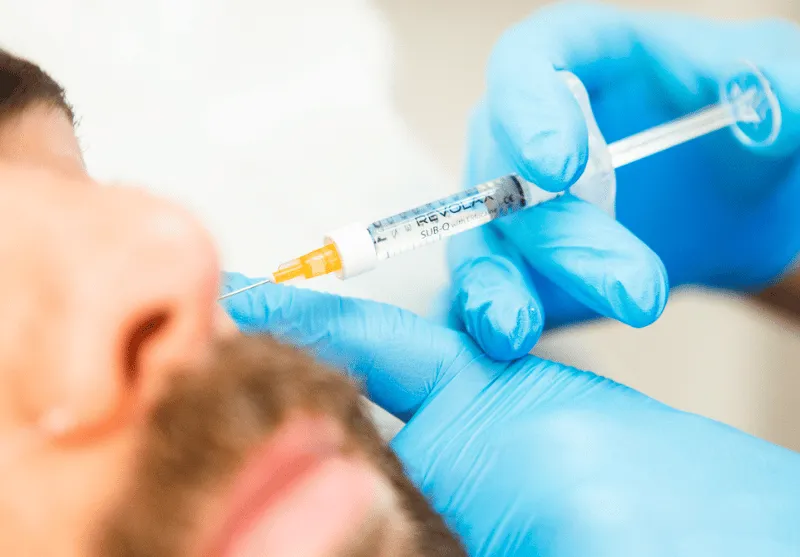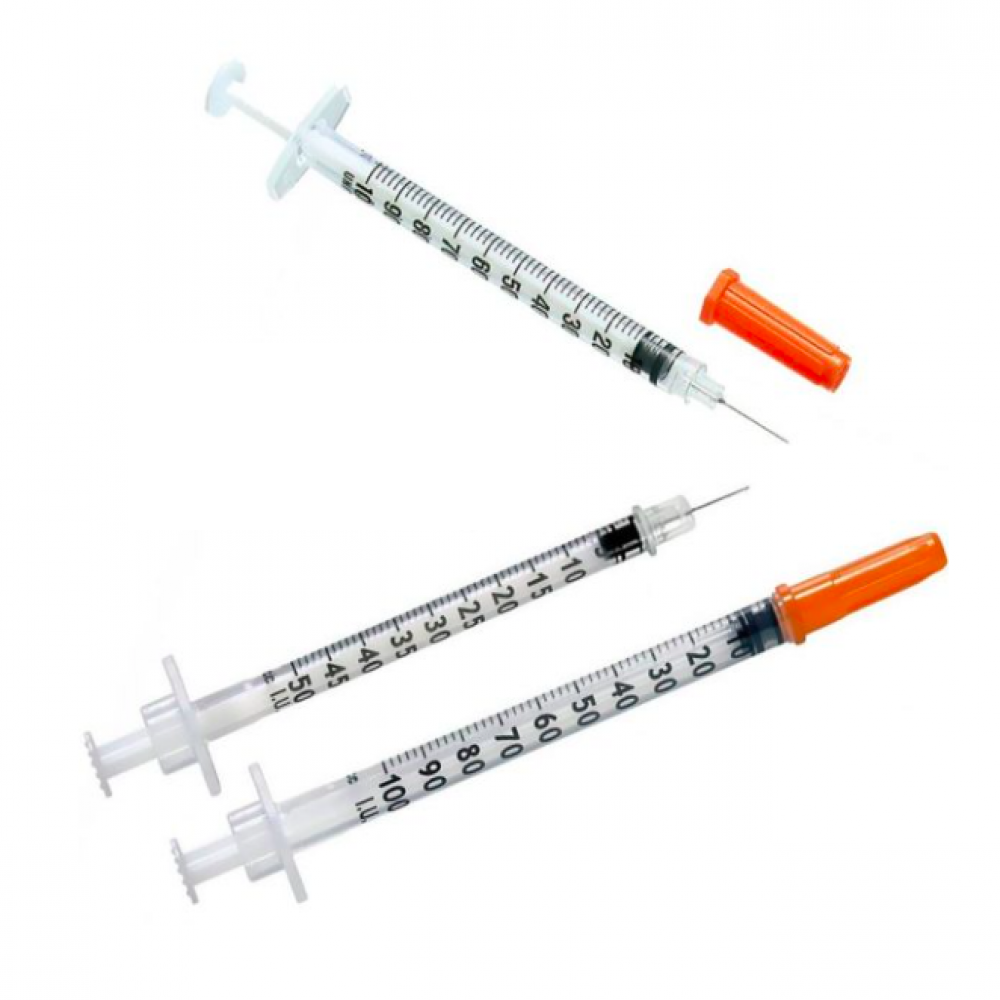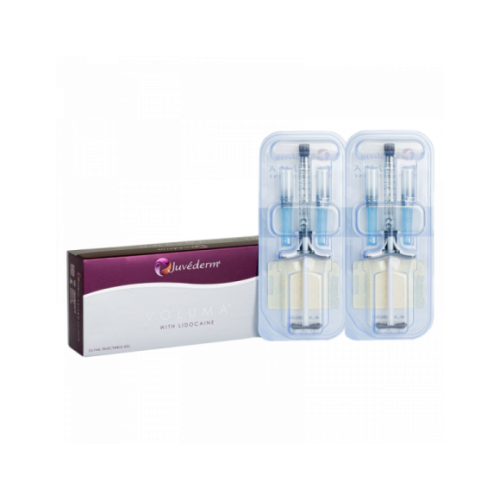In the world of aesthetic treatments, understanding the concept of Milliliters in a Syringe of Filler is crucial for both practitioners and patients alike. Fillers have gained prominence in cosmetic procedures, primarily due to their ability to enhance facial features, restore volume, and smoothen wrinkles. However, the effectiveness and safety of these treatments largely depend on a clear understanding of the volume of filler being used. This article will delve into the significance of milliliters in syringes of fillers, exploring various aspects related to this topic.
Table of Contents
ToggleUnderstanding the Role of Milliliters in a Syringe of Filler

The role of milliliters in a syringe of filler cannot be overstated. It serves as a fundamental measure that determines not only how much product is used during a treatment but also influences the outcome of the procedure.
Fillers are used in various areas of the face, from plumping up lips to filling in hollows under the eyes. The amount of filler injected directly correlates to the results achieved, which makes understanding milliliters essential for both patients and practitioners. A deeper insight into the purpose and importance of this volume measurement helps individuals make informed decisions regarding their cosmetic enhancements.
Definition and Purpose of Role of Milliliters in a Syringe of Filler

Milliliters (ml) are a standard unit of measurement used to quantify liquid substances, including injectable fillers. In the context of cosmetic procedures, fillers are typically available in syringes containing varying amounts of product, commonly ranging between one to three milliliters.
The primary purpose of defining milliliters in a syringe of filler is to ensure precision in administration. Accurate measurement prevents overfilling or under-filling treatment areas, which can lead to unsatisfactory results or complications. This specific measurement allows practitioners to tailor their approach based on individual patient needs, desired outcomes, and unique facial structures.
The Importance of Volume in Aesthetic Treatments

In aesthetic treatments, volume plays a pivotal role in achieving natural-looking results. The human face has intricate contours, and fillers must be injected judiciously to maintain harmony and balance among facial features.
Understanding the relationship between volume and aesthetics enables practitioners to create customized treatment plans. For instance, a larger volume may be necessary for more significant corrections, such as augmenting cheeks, while smaller volumes might suffice for subtle lip enhancement. Therefore, grasping the concept of ml in a syringe of filler empowers both patients and providers to work collaboratively toward desired aesthetic goals.
Anatomy of a Role of Milliliters in a Syringe of Filler

To fully appreciate the significance of milliliters in syringes of fillers, it is essential to examine the anatomy of a filler syringe. Each component plays an integral role in ensuring effective delivery of the product.
A typical syringe comprises a barrel that holds the filler, a plunger that allows for controlled dispensing, and a needle for injection. Understanding these components and their functions aids in grasping how milliliters translate into practical application during treatment.
Components of a Fillers Syringe

Each component of a filler syringe is meticulously designed for optimal performance during injections.
The barrel is the main body of the syringe and is calibrated with clear markings indicating the volume of filler. This calibration enables practitioners to measure exact amounts accurately, allowing for personalized treatment approaches tailored to the patient’s requirements.
The plunger is responsible for pushing the filler out of the syringe when pressure is applied. Its design ensures smooth operation, helping practitioners control the flow of filler with precision.
Lastly, the needle comes in different gauges, affecting the size of the opening through which the filler is delivered. A thinner needle minimizes trauma to tissues, resulting in less discomfort during the procedure.
Volume Measurement: What Does Milliliter Mean?

Understanding what a milliliter represents goes beyond mere numbers; it involves recognizing the implications of this unit on treatment results.
One milliliter is equivalent to one cubic centimeter, and this small volume can make a significant difference in aesthetic treatments. For example, injecting just half a milliliter of filler can enhance the fullness of lips without creating an exaggerated look, while a full milliliter may yield a more voluminous effect.
Practitioners often rely on their experience and expertise to determine the right volume needed for each treatment area. Consequently, a comprehensive understanding of milliliters aids in managing patient expectations and achieving satisfactory results.
Types of Role of Milliliters in a Syringe of Filler
Not all fillers are created equal, and they vary significantly in terms of composition, longevity, and intended use. Different types of fillers dictate how the ml in 1 syringe of filler translates into treatment outcomes.
Familiarity with the various types of fillers available allows practitioners to select the most appropriate options based on patient needs and desired results.
Hyaluronic Acid Fillers

Hyaluronic acid fillers are among the most popular choices in aesthetic medicine. This naturally occurring substance in the body is known for its ability to retain moisture, making it ideal for adding volume and hydration to the skin.
Typically, HA fillers are offered in syringes containing one milliliter. Due to their biocompatibility, they can be easily absorbed by the body, resulting in gradual degradation over time. This characteristic allows for natural-looking results, as well as easy reversibility through the injection of hyaluronidase if desired.
The versatility of HA fillers extends to various treatment areas, including lips, cheeks, and nasolabial folds. Practitioners can manipulate the volume injected to achieve the desired aesthetic, making them an invaluable tool in modern cosmetic practices.
Calcium Hydroxylapatite Fillers

Calcium hydroxylapatite (CaHA) fillers represent another category of injectables. Unlike HA fillers, CaHA is a synthetic substance composed of calcium microspheres suspended in a gel carrier.
These fillers tend to be thicker than HA fillers and are often utilized for deeper tissue augmentation, such as volumizing the cheeks or correcting moderate to severe facial wrinkles. Typically, CaHA fillers are available in syringes containing 1.5 milliliters or more, which allows for larger volumes per injection session.
The unique structure of CaHA stimulates collagen production, resulting in longer-lasting effects compared to HA fillers. Patients seeking a more substantial volumizing effect may opt for CaHA fillers, but awareness of milliliters in a syringe becomes vital in achieving the right balance.
Poly-L-lactic Acid Fillers
Poly-L-lactic acid (PLLA) fillers function differently from both HA and CaHA fillers. Rather than providing immediate volume, PLLA stimulates collagen production over time, leading to gradual improvements in skin texture and volume.
Typically, PLLA fillers are available in vials rather than pre-filled syringes, requiring practitioners to mix the product with sterile water prior to injection. While the total volume may vary, treatment protocols usually involve multiple sessions to achieve optimal results.
It is crucial to understand the role of milliliters in the context of PLLA fillers, as the volume injected during each session influences the overall treatment plan and final outcomes. As such, practitioners need to communicate effectively with patients about expected timelines and results associated with this type of filler.
Permanent vs. Temporary Fillers
Fillers can generally be categorized as either permanent or temporary, further influencing considerations of milliliters in a syringe of filler.
Temporary fillers, like HA and CaHA, gradually metabolize within the body, necessitating repeat treatments to maintain results. In contrast, permanent fillers offer long-lasting effects but come with increased risks and potential complications.
When considering the volume of filler, patients may weigh the pros and cons of each option. Temporary fillers allow for adjustments and modifications based on changing aesthetic preferences, but the need for maintenance may necessitate a deeper understanding of how many milliliters are required over time.
Determining the Role of Milliliters in a Syringe of Filler
Determining the appropriate ml in 1 syringe of filler necessitates careful consideration of various factors that influence treatment outcomes.
Practitioners must evaluate each patient’s unique facial anatomy as well as their aesthetic goals to devise a suitable treatment plan. Additionally, understanding the interplay between volume and individual patient profiles can enhance the quality of the results achieved.
Factors Influencing Filler Volume
Several factors influence the volume of filler needed during treatment.
Firstly, the specific treatment area can dictate the amount required. For instance, the lips often require less volume for subtle enhancements compared to the cheeks, where larger volumes may be necessary for effective contouring.
Secondly, the individual’s age and skin quality can affect filler needs. Older patients with thinner skin may require more product to achieve satisfactory results, while younger patients may need less due to their naturally fuller features.
Lastly, personal preferences play a significant role in determining how much filler to use. Open communication between practitioners and patients regarding aesthetic desires and expectations is essential to guide the decision-making process.
Individual Considerations: Facial Structure and Goals
Every person’s facial structure is unique, which necessitates individualized consideration when determining the amount of filler to use.
Analyzing the proportions and dimensions of a patient’s face allows practitioners to propose treatment plans that align with the patient’s aspirations while maintaining facial harmony.
For example, a patient with a wider jawline may benefit from additional filler in the upper face to create balance, while someone with a heart-shaped face may prefer focus on enhancing cheekbones without adding bulk to the lower face.
Ultimately, a thorough assessment of facial structure combined with patient goals leads to more successful outcomes and greater satisfaction with the results.
How Role of Milliliters in a Syringe of Filler is in One Syringe?

Understanding how many milliliters of filler are contained in one syringe is critical for both practitioners and patients when planning aesthetic treatments.
The standard sizes of syringes typically range from one to two milliliters, although larger syringes may be utilized depending on the filler type and treatment area. Familiarity with these measurements can aid both parties in establishing realistic expectations and treatment goals.
Standard Volumes of Fillers Available
Most commonly used fillers are sold in syringes containing one milliliter. This volume is considered a standard for various applications, enabling practitioners to deliver precise amounts during treatments.
Some specialized products may come in larger syringes, offering advantages in certain scenarios, such as reducing the number of injection sites needed for extensive areas. Awareness of these volumes allows for a more streamlined approach to treatment planning.
Typical Usage Scenarios for Different Areas of the Face
Different areas of the face require varying amounts of filler, emphasizing the importance of understanding ml in 1 syringe of filler.
For instance, lip augmentation typically requires one milliliter per session for subtle enhancements. Conversely, cheek augmentation may require two milliliters or more, particularly in cases where significant volume restoration is desired.
Additionally, areas prone to volume loss, such as the tear troughs or marionette lines, may call for strategic placement of filler, combining multiple syringes if necessary for optimal results.
Administration Techniques for Role of Milliliters in a Syringe of Filler

Proper administration techniques play a significant role in achieving predictable results when utilizing fillers.
Understanding the various injection methods and their impact on volume can help practitioners refine their skills and enhance patient experiences.
Injection Techniques: Linear Threading, Bolus, and Microcannula
There are several techniques practitioners employ when injecting fillers, each carrying its nuances in relation to volume management.
Linear threading involves injecting filler along a planned line, allowing for even distribution within the tissue. This technique is commonly used for lip augmentation, as it provides a smooth and natural appearance.
Bolus injections involve depositing larger amounts of product at once, suitable for areas needing significant volume, such as the cheeks. By understanding how many milliliters to inject, practitioners can control the amount placed in each bolus effectively.
The microcannula technique offers a minimally invasive alternative, utilizing a blunt-tipped cannula to minimize trauma to surrounding tissues. This method is particularly beneficial for larger treatment areas, as it allows for broader coverage with less filler volume needed.
Importance of Technique in Relation to Volume
The choice of injection technique directly impacts both the safety and efficacy of filler treatments.
Using the correct approach ensures optimal volume distribution while minimizing complications. For example, employing linear threading will likely require less filler overall due to its precision, whereas a bolus technique may necessitate a higher volume to achieve the same results.
By mastering injection techniques and understanding their relationship with volume, practitioners can optimize their practice to produce natural-looking, aesthetically pleasing outcomes for their patients.
Safety and Risks Associated with Filler Injections

While injectable fillers are generally safe, understanding the associated risks and complications is vital for ensuring patient safety and satisfaction.
Practitioners must be aware of common side effects and how to handle complications arising from administering too much or too little filler.
Common Side Effects
Patients may experience mild side effects following filler injections, including redness, swelling, bruising, and tenderness at the injection site. These reactions are typically short-lived and resolve within days.
However, it is essential for practitioners to inform patients about the possibility of these side effects beforehand, allowing them to manage expectations appropriately.
Additionally, being knowledgeable about the anatomy of the face and the potential for vascular occlusion or necrosis underscores the importance of proper technique and volume management during injections.
Managing Complications Related to Over- or Under-filling
Over-filling can lead to unnatural bulging or “pillow face” appearances, while under-filling may result in suboptimal correction.
Practitioners must possess the skills to adjust their techniques and volumes on-the-fly to address these complications. Should issues arise, prompt intervention and open communication with the patient are paramount to restoring trust and confidence in the treatment.
In some cases, utilizing reversal agents, such as hyaluronidase for HA fillers, can quickly remedy unwanted results stemming from over-filling. Being proactive in managing complications contributes to better overall patient outcomes and satisfaction.
Post-Treatment Care and Expectations

Educating patients about post-treatment care is crucial for maximizing the benefits of fillers. With proper aftercare, patients can enhance their healing process and prolong the results achieved.
Immediate Aftercare Following Injection
After receiving filler injections, patients should follow specific aftercare guidelines to minimize discomfort and promote healing.
Common recommendations include avoiding strenuous activities, excessive sun exposure, and alcohol consumption for 24 hours post-treatment. Applying ice packs to the treated area can help reduce swelling and discomfort.
Informing patients about the normalcy of swelling and possible bruising reinforces realistic expectations for recovery. Encouraging open communication allows patients to voice any concerns that may arise during the healing process.
Long-term Care and Maintenance
Long-term maintenance involves educating patients on how to prolong the effects of their fillers.
Regular follow-up appointments enable practitioners to assess results and determine when additional treatment may be necessary. Depending on the type of filler used, patients may require touch-ups every few months to maintain their desired appearance.
Emphasizing the importance of skin care routines and lifestyle choices, such as proper hydration and sun protection, can significantly contribute to the longevity of results. Ultimately, ongoing patient education fosters lasting relationships and enhances the overall aesthetic experience.
The Influence of Filler Density on Results
An often-overlooked factor in the realm of fillers is density, which can significantly impact outcome quality and longevity.
By understanding how viscosity relates to filler effectiveness, practitioners can make informed choices about product selection and application techniques.
Understanding Viscosity and Its Impact
Viscosity refers to the thickness or resistance to flow of a substance. In fillers, this attribute directly affects how the product behaves once injected.
Higher viscosity fillers tend to provide more structural support, making them ideal for deep volume restoration, while lower viscosity options may be more suitable for areas requiring flexibility and subtlety, such as lips.
Selecting the appropriate filler density for treatment areas ensures that results appear natural and harmonious with the patient’s overall aesthetic.
How Density Affects Longevity and Result Quality
Filler density also plays a role in how long the results last. Generally, denser fillers have enhanced longevity compared to those with lower viscosity.
Practitioners must balance the desire for longer-lasting results against the need for natural movement and expression.
By assessing the specific density and properties of each filler, practitioners can create individualized treatment plans that meet patients’ aesthetic objectives while considering the longevity of their results.
Trends in Filler Usage

As the aesthetics industry continues to evolve, emerging trends shape the landscape of filler usage.
Staying abreast of these trends enables practitioners to adapt their techniques and offerings to cater to shifting patient demands.
Growing Popularity of Non-Surgical Enhancements
Non-surgical enhancements have gained remarkable traction in recent years. Patients increasingly seek minimally invasive solutions to achieve their desired looks, favoring injectables like fillers over surgical alternatives.
This trend highlights a growing recognition of the importance of subtlety and natural results. Patients are more inclined to explore the possibilities of fillers to enhance their features rather than undergo drastic surgical changes.
Innovations in Filler Formulations
Continuous advancements in filler formulations contribute to improved outcomes and patient experiences. Manufacturers are developing new products with enhanced properties, resulting in longer-lasting effects and reduced side effects.
Furthermore, the introduction of combination therapies, where fillers are used alongside other treatments like neuromodulators, signifies a shift towards holistic approaches to aesthetics. These innovations empower practitioners to customize treatment plans further, optimizing the results achieved with the appropriate ml in 1 syringe of filler.
Conclusion
Navigating the realm of aesthetic treatments requires a thorough understanding of the ml in 1 syringe of filler. This knowledge extends beyond the mere measurement of volume; it encompasses the principles of personalized care, safety, and effectiveness that underpin successful filler administration.
From discerning the differences between filler types to mastering injection techniques and managing patient expectations, practitioners play a vital role in shaping the aesthetic experiences of their clients. As trends continue to evolve, an ongoing commitment to education and adaptation is essential for delivering exceptional results with injectable fillers.
In conclusion, a solid grasp of milliliters in syringes of fillers serves as the foundation for successful aesthetic treatments, empowering both practitioners and patients to achieve their desired outcomes with confidence and clarity.
Contact us via other platforms if you have any questions or requests that need to be answered quickly.
Tiktok: www.tiktok.com/@lunabeautyacademy6
Hotline: 034 254 0228
Email: lunabeautyacademy@gmail.com
Address: No. 29, Alley 140/1/2, Lane 140 Nguyen Xien, Thanh Xuan, Hanoi
Luna wishes you success and hopes you will have the best experiences at the academy. If you need advice or answers about anything, please leave your Contact Information With Us, the Luna team will contact you soon. Thank you for reading this article.


















